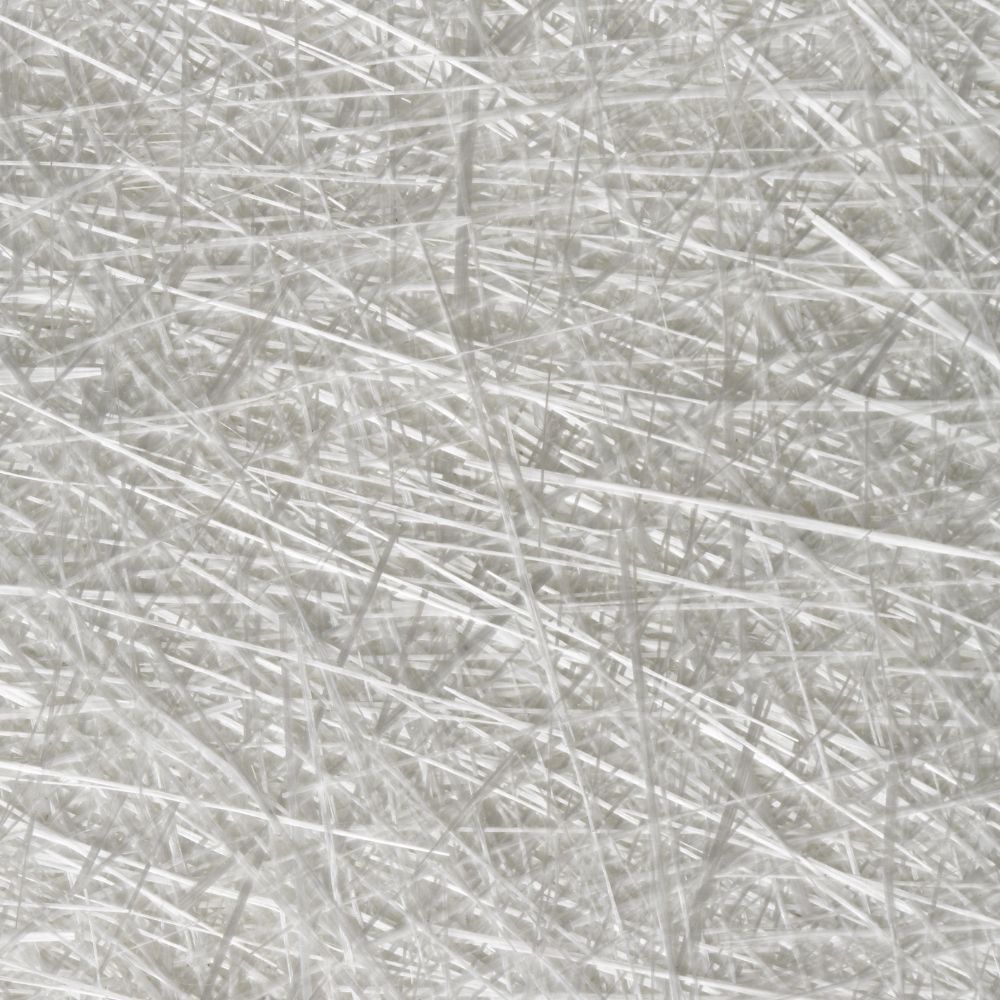Fiberglass has been in the mattress industry for years, but the topic has raised multiple concerns, with people now debating whether it’s healthy to sleep on a mattress with it.
Although fiberglass is packed inside the mattress’s layers, you could be exposed to it if the mattress’s cover tears. Does this mean you have to throw away your mattress if it has fiberglass? We’ll tell you all about fiberglass, why manufacturers use it, and how you can tell if it’s been used in your mattress.
What Is Fiberglass?
Fiberglass is a composite made from reinforced plastic and glass. The material is commonly found in mattresses, but you can also find it in wall insulation and many other items like sports equipment, aircrafts, roofing, hot tubs, external door skins, and furnace filters. Fiberglass is used often because it’s durable, cheap to mass produce, and malleable enough to easily work with.
What Does Fiberglass Look Like?
Fiberglass looks like tiny pieces of thread that are generally white and shiny, and since it’s typically woven into the mattress’s layers, you’d have to take the cover of your mattress off to actually see it.
Fiberglass is more susceptible to shedding, so there’s a risk of it breaking off from what it’s woven into, making these pieces even harder to locate. This is also where it becomes hazardous since these tiny shards could get out on the bed’s surface.

Why Is There Fiberglass in Mattresses?
Companies use fiberglass in mattresses because it’s a good flame retardant in the event of a fire. Mattresses are highly flammable, especially those made from memory foam, so if one catches on fire, it will quickly burst into flames.1 This is where fiberglass comes in, acting as a barrier and causing a mattress to melt rather than erupt into flames. With this barrier, the fire is less likely to spread and reach other parts of your bedroom.
Dr. Raj Talks Fiberglass in Mattresses



Is Fiberglass in Mattresses Safe?
Fiberglass in a mattress is generally considered safe as long as it’s contained within the mattress. However, fiberglass can pose a health risk if this material escapes and you’re exposed to it.2
Health Risks of Fiberglass in Your Mattress
Symptoms associated with fiberglass exposure include:2
- eye irritation and redness
- a sore nose and throat
- temporary stomach irritation
- aggravate asthma and bronchitis
According to research, children and infants are particularly at risk if exposed to fiberglass.3 The reason for this is that they are more vulnerable if exposed and are more likely to play or jump on mattresses, which could cause fiberglass to break through.
“Exposure to fiberglass can cause skin irritation, breathing problems, eye discomfort, and allergic reactions. Long-term exposure might even lead to more serious respiratory issues.”
Dr. Raj Dasgupta
How to Tell if There is Fiberglass in a Mattress
Price
Fiberglass is cheap to mass produce as a fire barrier in a mattress, which means that beds with this material as a flame retardant are typically cheaper than mattresses with natural materials like wool. It’s hard to tell the exact price point, but this is where you should use your best judgment.
A general rule of thumb is that a cheaper mattress (like a queen-size bed under $600) is more likely to contain fiberglass. That said, we recommend checking either way, no matter the cost of the mattress you’re interested in.
Ask the Mattress Company
Most companies disclose the materials they use, so you don’t have to wonder what’s inside their mattresses, but if you can’t find that information, you should always ask the company directly. You can either email or call them to ask about fiberglass, or you can use the live chat on the company’s website. Most companies will be truthful, but it’s best to look elsewhere if you don’t get a clear answer.
Learn More: Best Fiberglass-Free Mattresses
Read the Label
All mattresses come with a label, so make sure to read it to ensure the bed has no fiberglass. As mentioned, most companies disclose the materials they use, so look out for the word ‘fiberglass’ but also terms like glass fiber, glass wool, and other similar terms. They all mean the same.
Check Where It’s Made
American-made mattresses are less likely to have fiberglass, whereas beds made in China are more likely to have this as a flame retardant. Although this isn’t a general rule, internationally made beds usually have fiberglass due to different safety standards.
What to Do If Your Mattress Has Fiberglass
If you’ve unknowingly purchased a mattress with fiberglass, reach out to the manufacturer to ask for a refund, especially if the fiberglass wasn’t disclosed. Otherwise, if you notice fiberglass coming out of your mattress, take these steps immediately.
Cover Your Mattress
Seal off your mattress with its original cover or a thicker mattress protector to prevent more fiberglass from coming out. This extra layer also helps protect you from further exposure to loose fiberglass particles. Be sure to wear goggles, a mask that covers your mouth and nose, gloves, and clothing that covers all exposed areas of skin before handling the fiberglass.
Vacuum Everything
Vacuum the entire bedroom diligently. Use a vacuum wand attachment to vacuum the floors, furniture, dressers, and anything else nearby. You may even want to vacuum the area directly outside of your bedroom. Be sure to wear the same protective gear and clothing.
Use a Lint Roller
A lint roller can help you collect any loose fiberglass particles on your mattress or in your bedroom. Use a lint roller with strong adhesive so that it grabs the particles.
Wash Contaminated Bedding
Wash all contaminated bedding, including sheets and duvets, separately from non-contaminated items — basically, anything that’s washable and comes in contact with the fiberglass. You may even want to wash your bedding twice to ensure all the fiberglass particles are removed.
Throw Away Anything Else
If your bed has decorative pillows or stuffed animals that have come in contact with the fiberglass but can’t be washed, it’s best to dispose of them entirely — even if there’s sentimental value attached. In this case, the benefits outweigh the risks since stuffed animals can easily collect fiberglass particles and may continue to impact your health if you keep them.
Dispose of the Mattress
If your mattress is leaking fiberglass particles, it should go. Not only is there no way to save it, but it will continue to pose a health risk until it’s been removed from your home. You’ll want to dispose of your mattress properly. Check your city or area guidelines for trash disposal, or contact your local trash collecting company if you’re not sure how to safely dispose of your mattress.
Hire a Professional
If you’re concerned about any lingering aftereffects of fiberglass exposure, you can contact a professional company or contractor to test the air quality in your home. This can help provide peace of mind, or determine next steps if there’s anything else you need to do to return your home’s air quality to normal.
Tips for Protecting Against Fiberglass in Mattresses
- Do not open or remove the mattress cover: If your mattress does contain fiberglass, it will be underneath the mattress’s cover. As such, you should avoid opening or removing the cover to prevent exposure, even if the cover comes with a zipper. Check the label or contact the company directly if you’re not sure whether the bed has fiberglass in it.
- Invest in a mattress protector: Investing in a mattress protector can help safeguard you against fiberglass exposure because it provides an extra barrier between you and the mattress. If fiberglass reaches the mattress’s cover, it will still be contained with the protector.
- Shop organic: An organic mattress has more organic, natural, and non-toxic materials. Many organic mattresses use wool as a flame retardant rather than fiberglass. So, if you’re looking to avoid fiberglass exposure altogether, consider a more eco-friendly bed that uses wool instead.
Last Word of Advice on Fiberglass
Although fiberglass itself isn’t harmful when packed inside a mattress, it could be dangerous if it finds its way to the other side of the mattress cover. For this reason, some people like to avoid it altogether.
If you’re one of those people looking for an alternative, you may want to focus on a more organic mattress without fiberglass. These beds usually use natural materials like wool, which acts as a retardant much like fiberglass but without the risk.
The Advisor Says
If you already have a bed you’re happy with but think it may contain fiberglass, that’s not an immediate cause for concern. You should be safe as long as your bed is in good condition with a cover that’s not damaged in any way.

Olivera Jancikin
Content Writer
About Author
Olivera is a content writer for Sleep Advisor and is enthusiastic about sleep. She firmly believes in the benefits of daytime naps on top of getting a full 8-hour sleep at night.
Combination Sleeper
References:
- “Mattress Flammability Standard Is a Lifesaver, NIST Report Finds”. National Institute of Standards and Technology. 2020.
- “Fiberglass”. Illinois Department of Public Health. Webpage accessed April 10, 2024.
- Wagner, Jeff., Fowles, Jefferson., Barreau, Tracy. “Fiberglass and Other Flame-Resistant Fibers in Mattress Covers”. National Library of Medicine. 2022.
